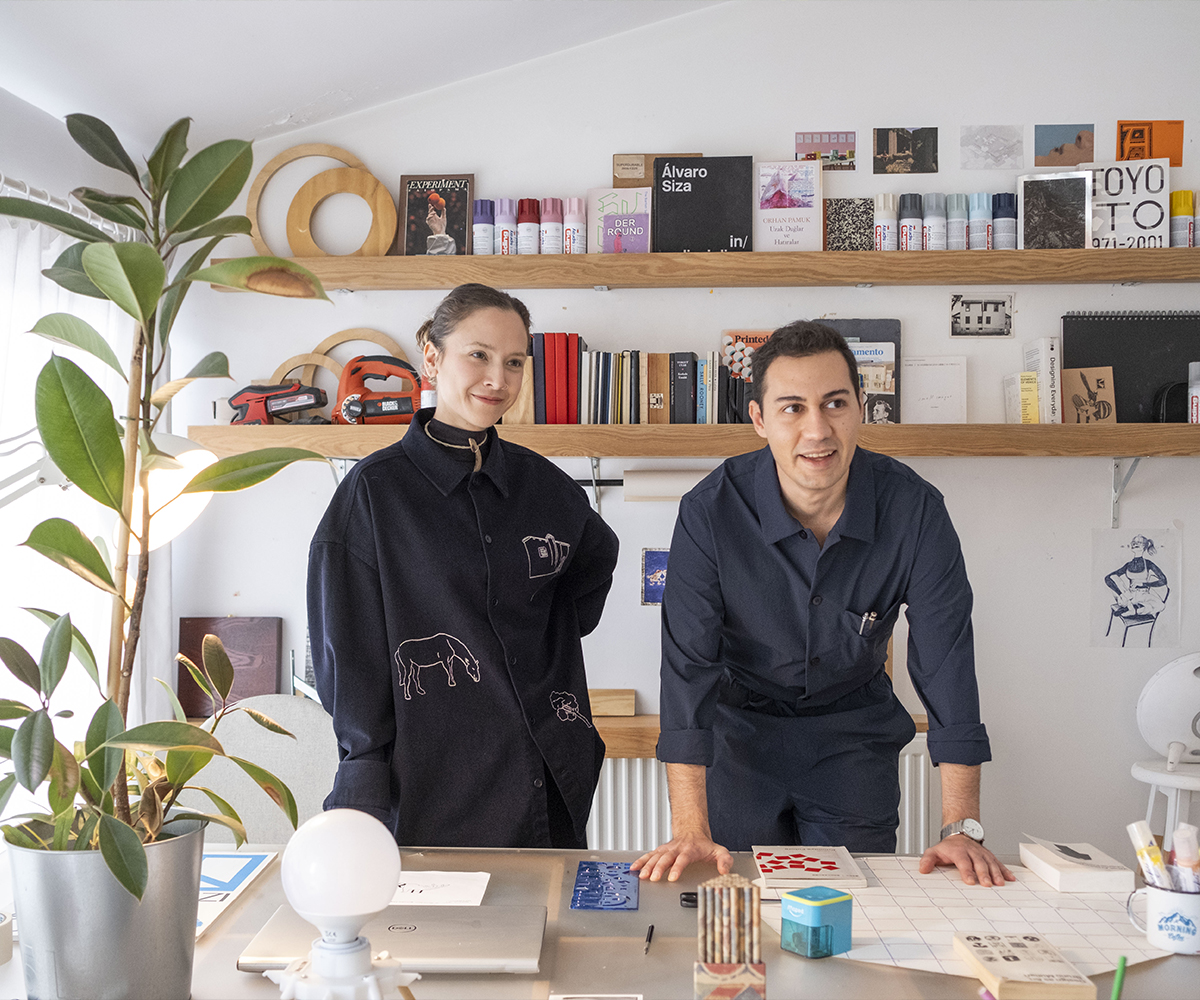
In the 18th episode of Bil’s Conversations series, we met with Ece Duran and Oğul Öztunç at their home in Kutuluş. We talked about their newly opened exhibitions at the Maçka Art Gallery and their design-production processes.
Photos: Elif Kahveci (@elifkahveci)
1. Hello Ece and Oğul! Could you please tell us about yourselves first? What kind of education did you receive, and where do you live?
Oğul: Hi Bils, I’m Oğul. I studied architecture at Istanbul Technical University. I’m the co-founder of Piknik Works, a versatile design practice. I live with Ece in Osmanbey, where we think, create, live, and produce together. Our home is filled with books, drawings, and various production equipment. And of course, we also have our Miro board. We are like a trio.
Ece: Hello! I studied architecture at İzmir University of Economics, and then I completed my master’s in architectural design at Istanbul Technical University. Throughout my practice, I’ve distanced myself from the normative procedures of architecture and tried to approach space through more irrational tools such as the unconscious, dreams, intuition, and prophecy. This approach sometimes manifests through writing, sometimes through digital worlds, and sometimes through physical construction. For both me and Oğul, production is not just an action; it’s a powerful foundation that defines our personality. Therefore, the world we create together is formed by books that constantly shape this foundation, various-sized tables, and sketch-filled notebooks.
2. Ece, you work in many fields as an architect, academic, and artist. How would you describe your work and style?
Ece: Reading, researching, and diving into books have always nourished me. My mind is strongly influenced by words, and it drives me to experiment and explore with my hands, trying to materialize what I’ve read—essentially, it gets me moving.
The way I create is similar to how I cook; I find what works together by sensing it, using an inner balance, so to speak. I try to follow a recipe step by step, but then I can’t help adding ginger to places where it doesn’t belong. I allow my body to guide me, without knowing the outcome.
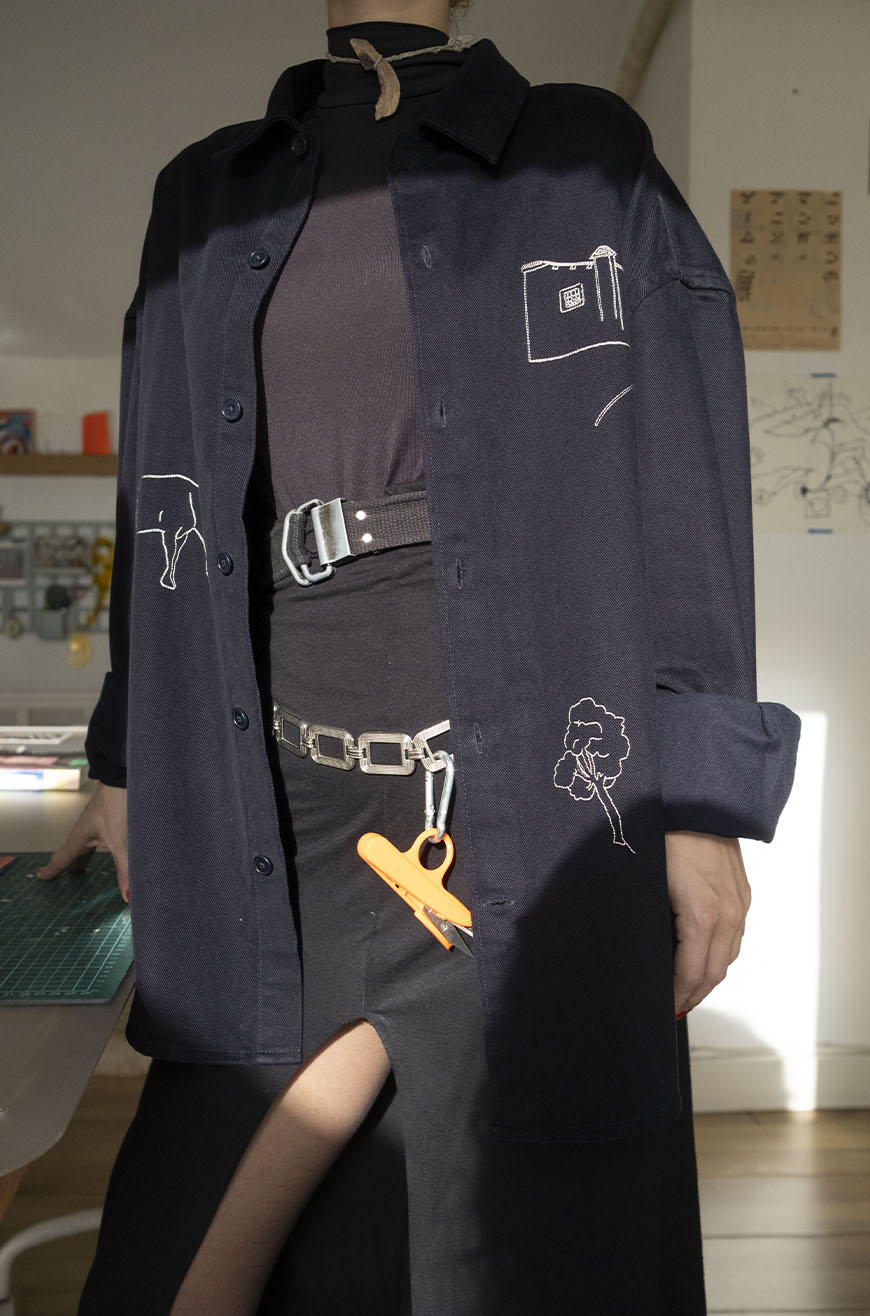
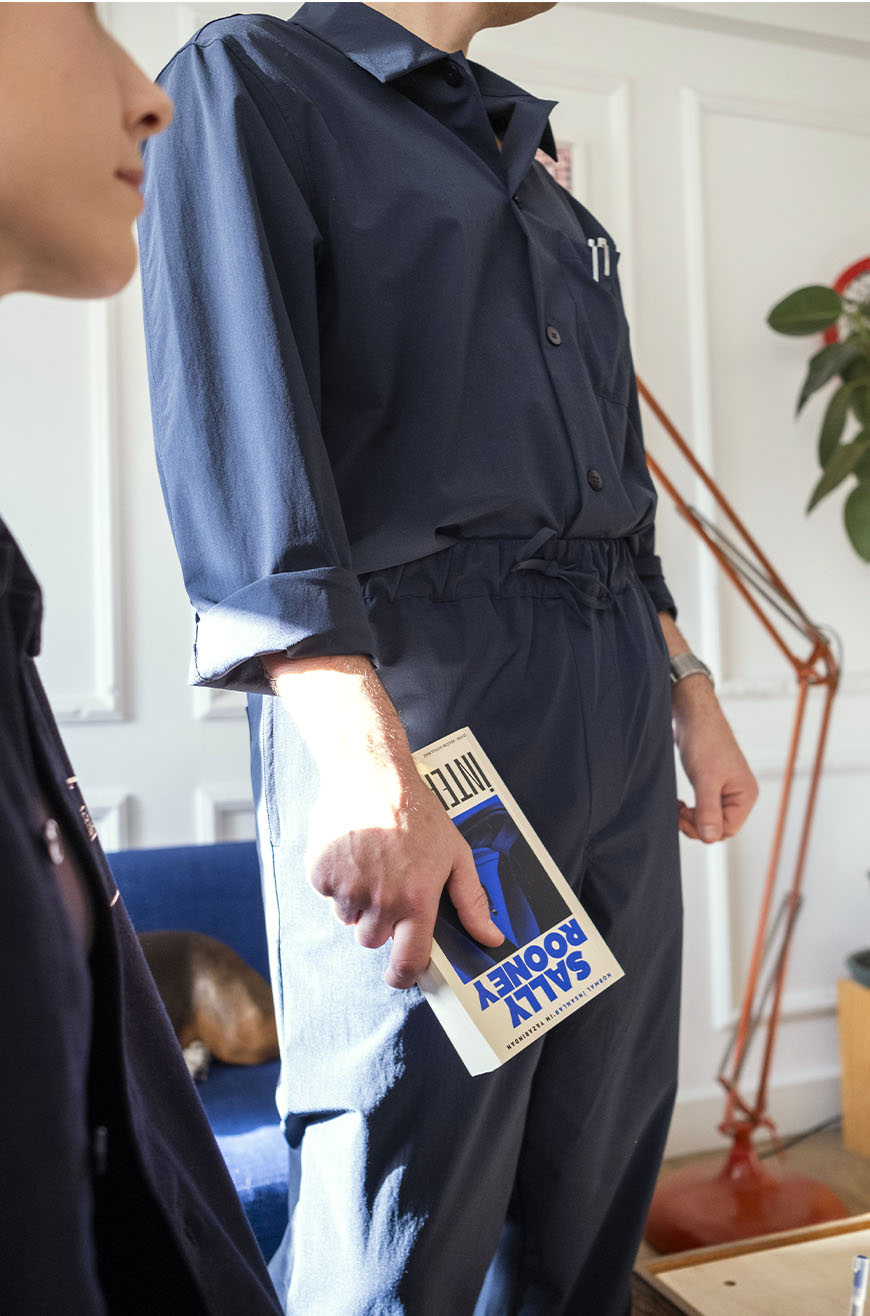

Rather than sticking to a single medium, I prefer to immerse myself deeply in an idea. Methods shape according to the necessities of the idea; sometimes I use digital modeling programs, other times physical tools. However, fundamentally, what I’m exploring with all these tools are the spatial potentials of dreams.
3. Oğul, we know you are also a versatile architect. In addition to many other projects, you’re conducting architectural work focused on daily life through Piknik Works. Which of these areas feeds you the most?
Oğul: Everything I watch, read, admire, or discuss with my friends nourishes my productions. Instead of focusing solely on one field, I’ve created a practice life that spans many mediums, adopting certain thinking and production methods. This gives me the opportunity to continuously learn and be nourished by different fields. In a way, I’m always a student, and I hope that this excitement reflects in the work I do. As Turgut Uyar said in Korkulu Ustalık, “Mastery is our apprenticeship.”
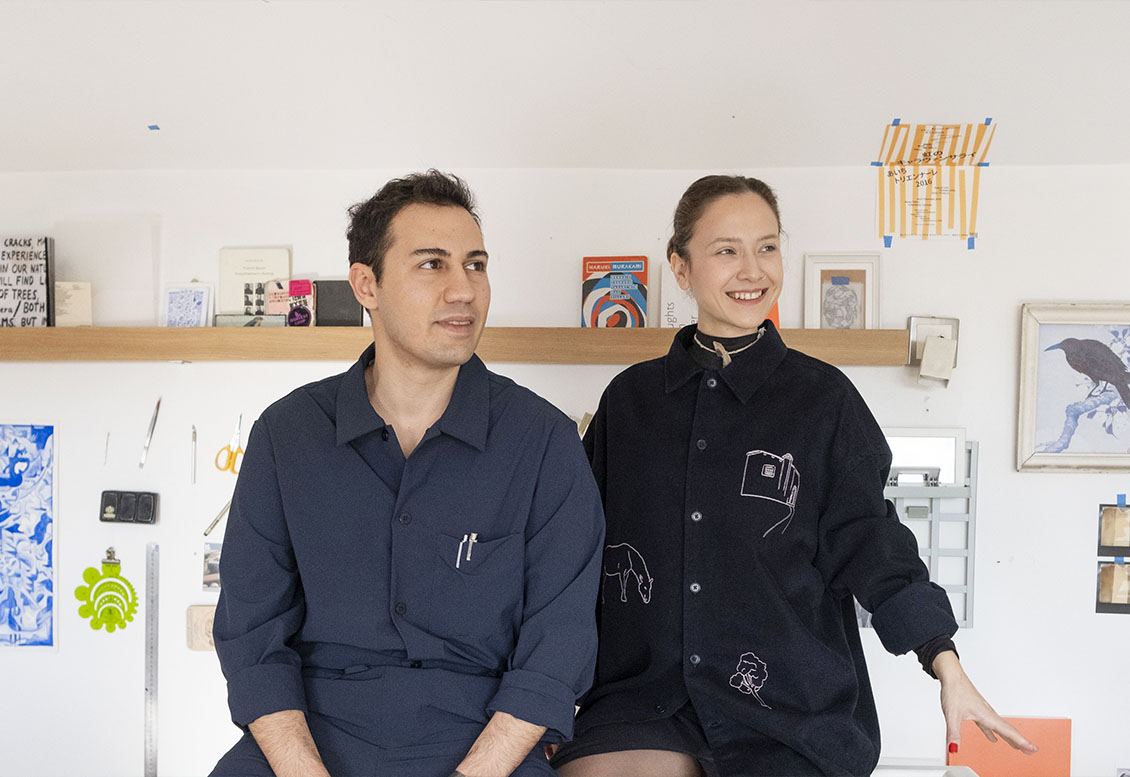
4. Has there been a project among the ones you’ve created that you found especially challenging or deeply affecting during the process?
Both: Our most recent work, the New Year exhibition at Maçka Art Gallery, was one of the most challenging yet touching projects for us. The installation, called Sofra (The Table), invites people to come together and sit down. It transforms into a table when entered, while also playing with the scale of the gallery itself.
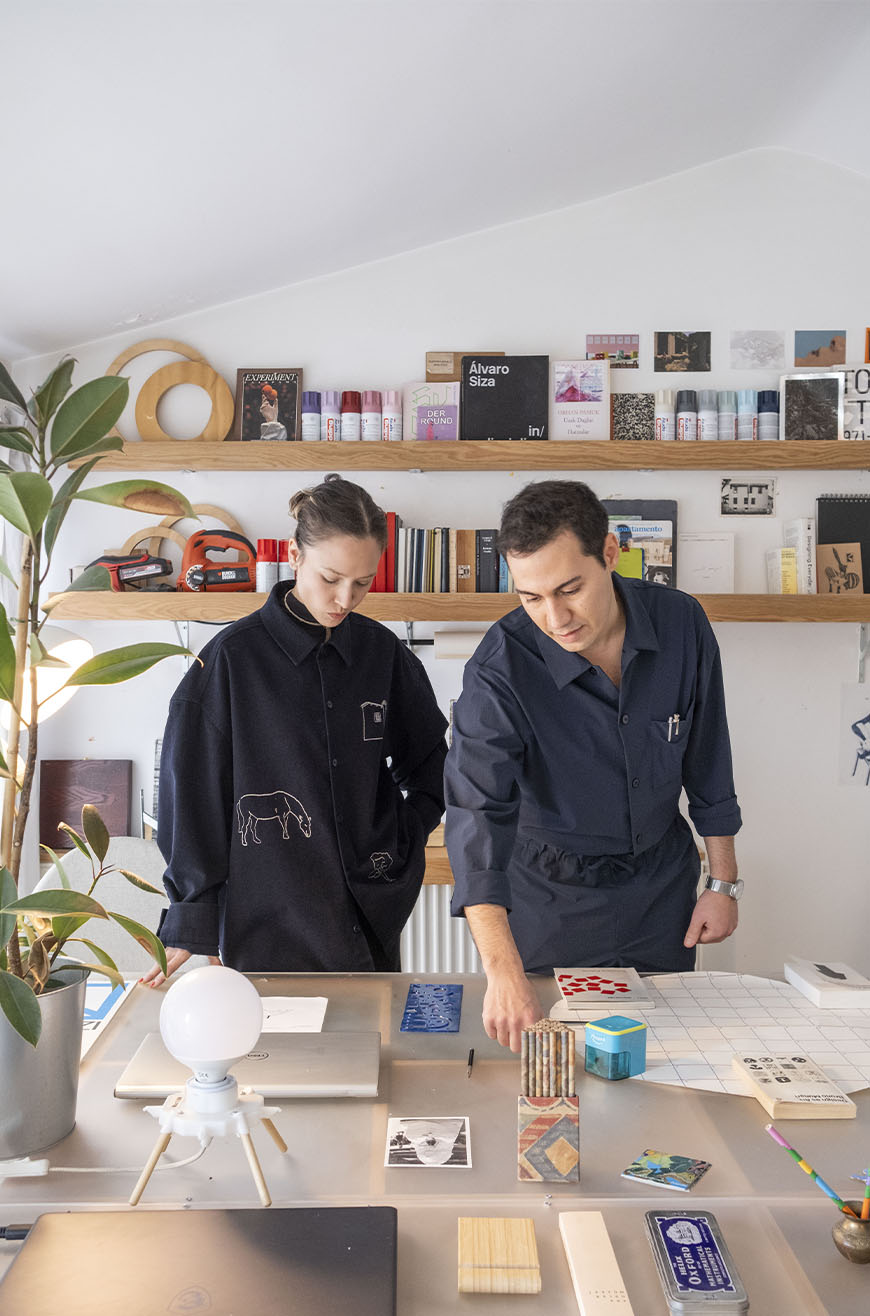
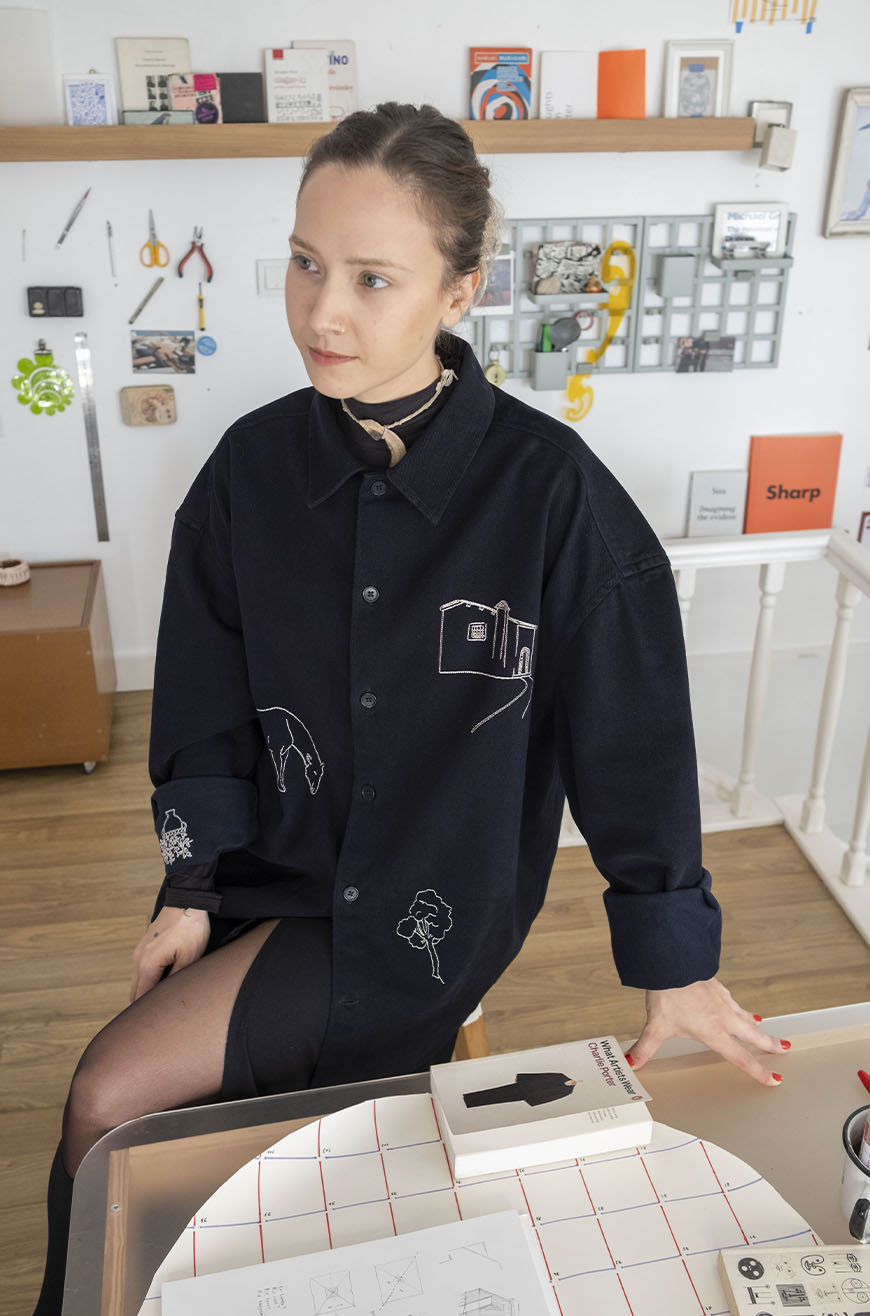
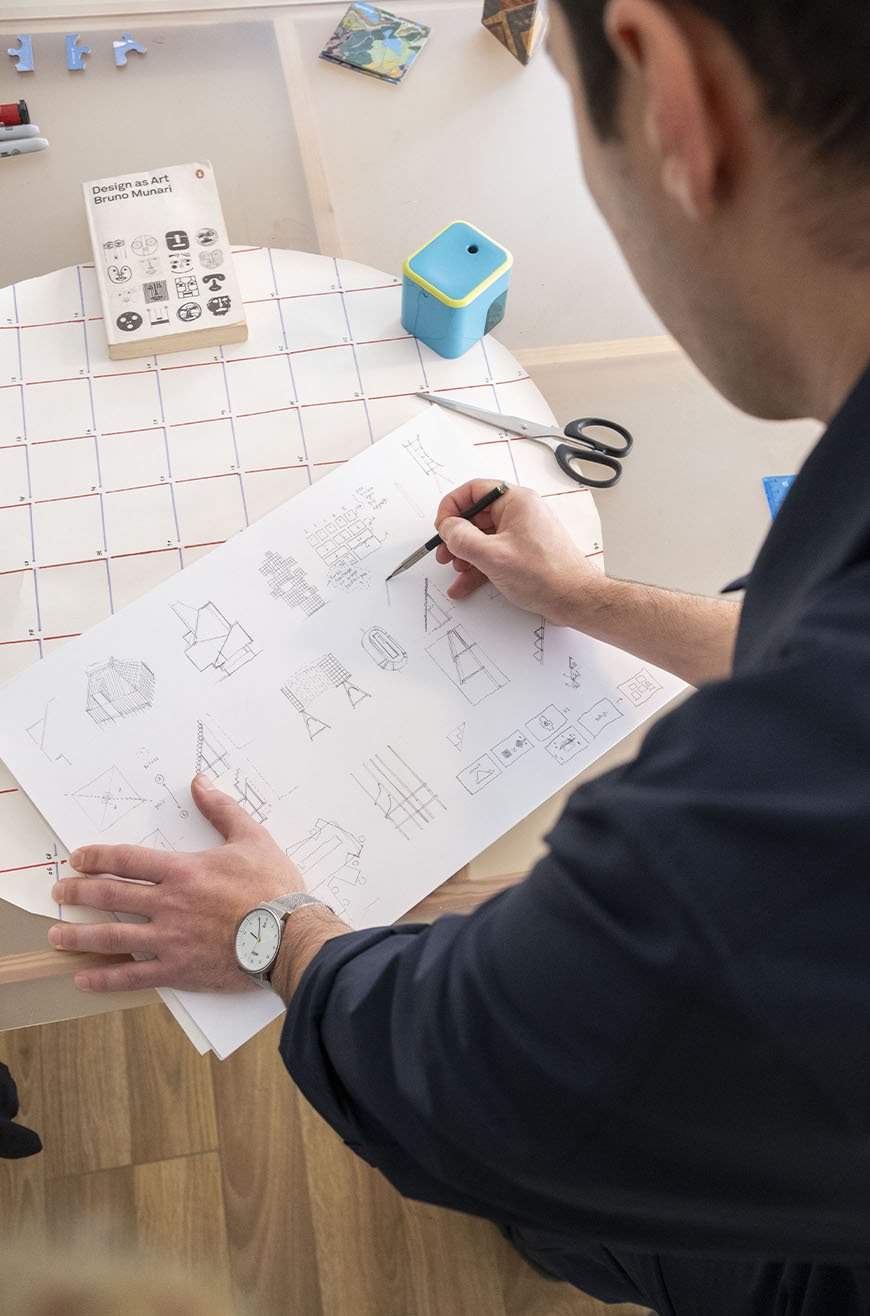
Typically, in galleries, it’s important to avoid human presence in photographs documenting the work, but in this piece, it takes on a deeper meaning with human presence in the photos. It continues to embody the meaning of the table in this way, which makes us very happy. The exhibition recently opened and will be available until January 17, 2025. We hope you enjoy it.
Exhibition link: https://www.mackasanatgalerisi.com/Turkce/Exhibitions/Sofra-Ece-Duran-0
5. You’ve created works together, such as “The Pleasure of Touching” related to Taksim Mosque. How did the idea of working together come up, and what was it like to collaborate?
Both: Creating together has been one of the fundamental dynamics of our relationship from the very beginning. I think it’s something we both genuinely wanted. The first thing we did was a notebook where we completed each other’s drawings, creating dialogue this way. Later, it expanded to include furniture in our home and speculative architectural projects we created together.
6. Ece, we know you recently participated in Mamut Art Project. How was that experience for you?
Ece: The Mamut Art team was incredibly meticulous, organized, and had excellent taste. Seren and Ekin created an amazing selection, as always. It was also a pleasure to meet the other artists in the exhibition.
The work I exhibited was called Sites of Further Becomings, one of my early works. I designed its spatial arrangement by combining and blending studio project texts from different architectural schools. It also referenced Marshall McLuhan’s concept of modern media, where networks constantly create collisions and transformations by bringing together information from various cultures and geographies.
7. Ece, could you tell us more about your recent work and then architecture falls asleep which has been showcased at Bilsart Shop?
Ece: This was a project that truly formed the backbone of my practice. It also shares its name with my master’s thesis, which served as an alternative design guide for architecture that would never be built. Through this project, I discovered how to ground my practice during my thesis process.
I wanted architecture to fall asleep, to imagine itself in new forms without prejudices and boundaries. This process required me to forget what I knew about space and let go of the control of my mind. It was a process of discovery, where I took molds from objects I found on the street, cut and shaped them with a saw, and made decisions purely based on my body’s instincts, bypassing my rational mind.
Perhaps it’s worth noting that in artistic production, the things we trace often come from the subconscious, subjectivity, and its potential. In Architecture Fell Asleep, the key idea was to break free from the cause-and-effect, formulaic design process of architectural production and to include more irrational tools like dreams, intuition, and prophecy—tools not based on science or logic.
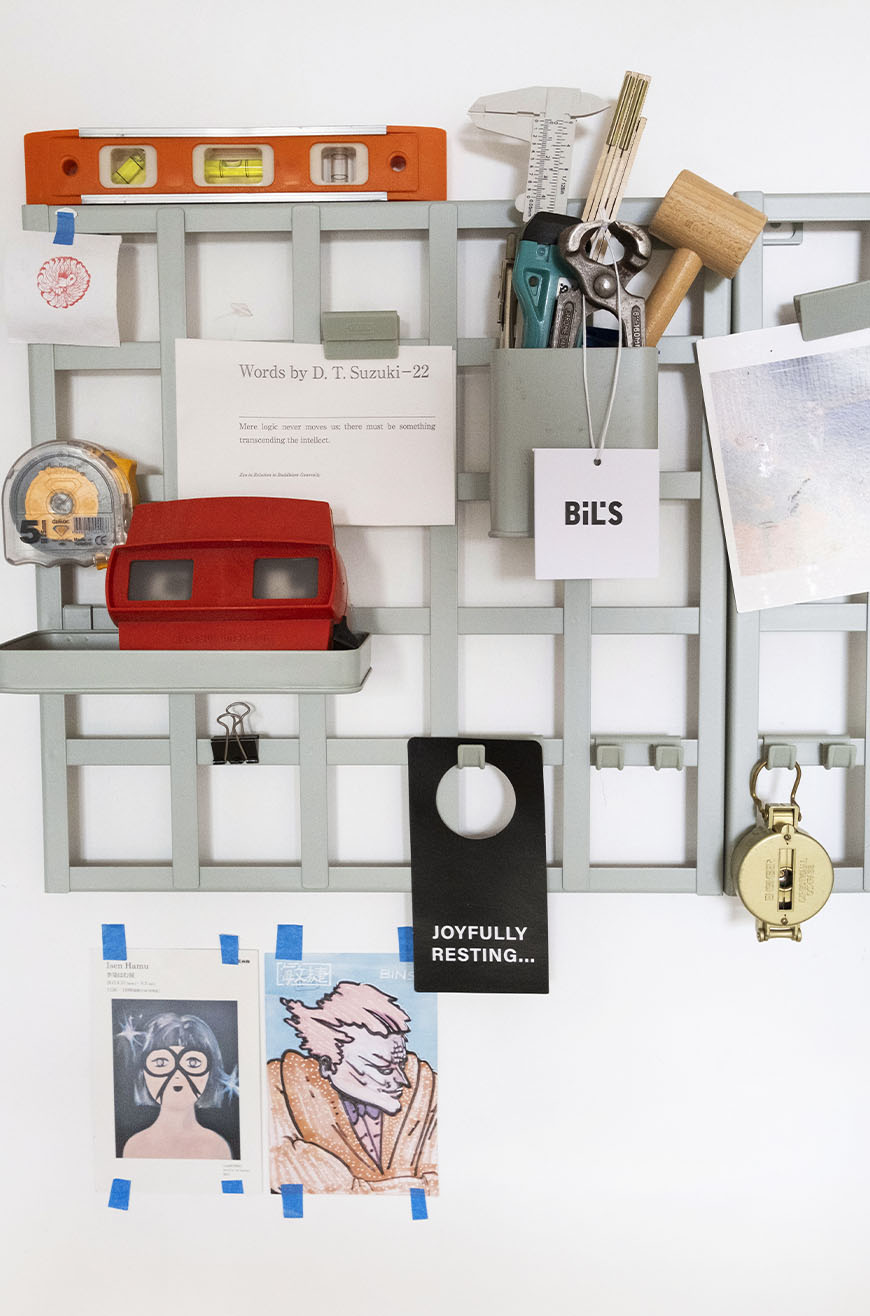

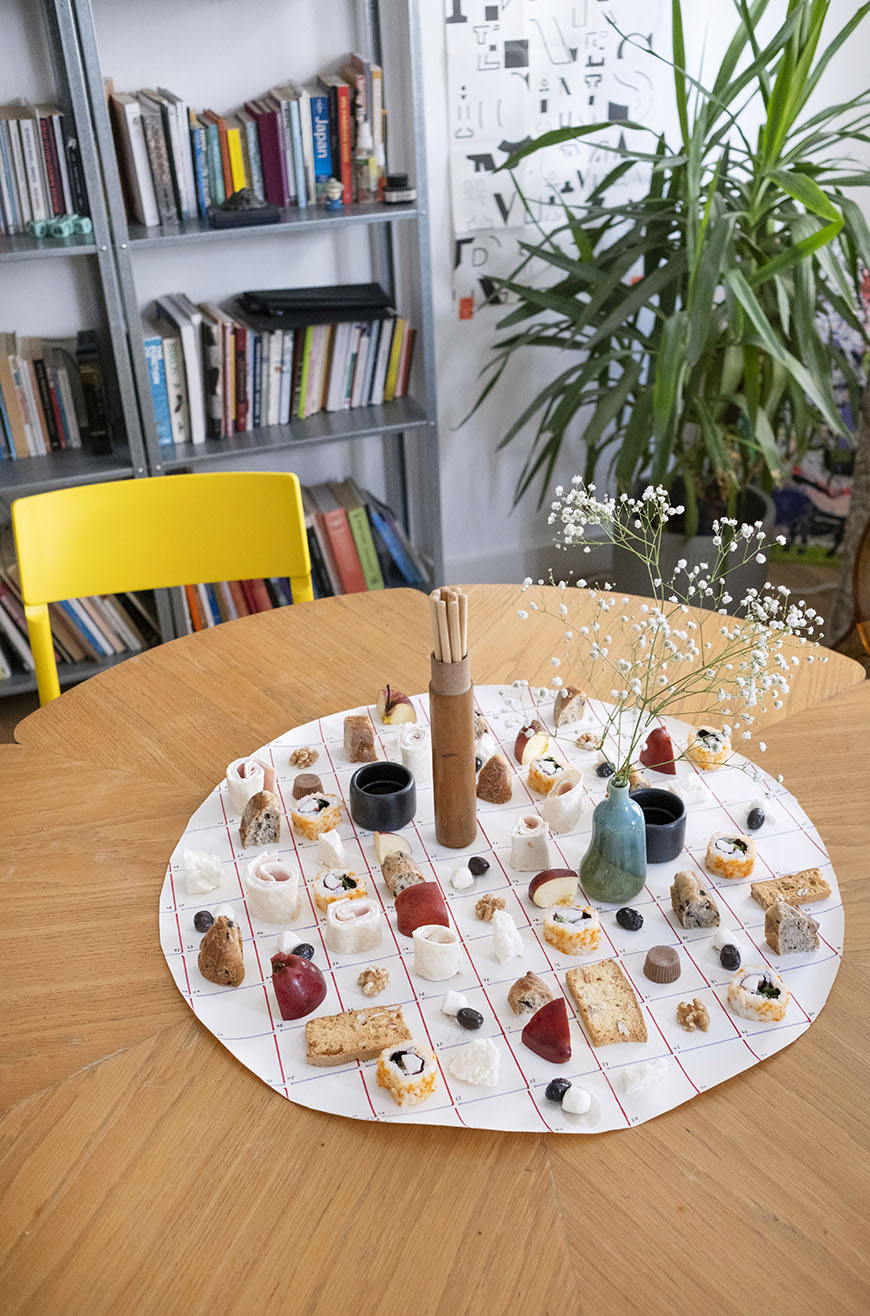
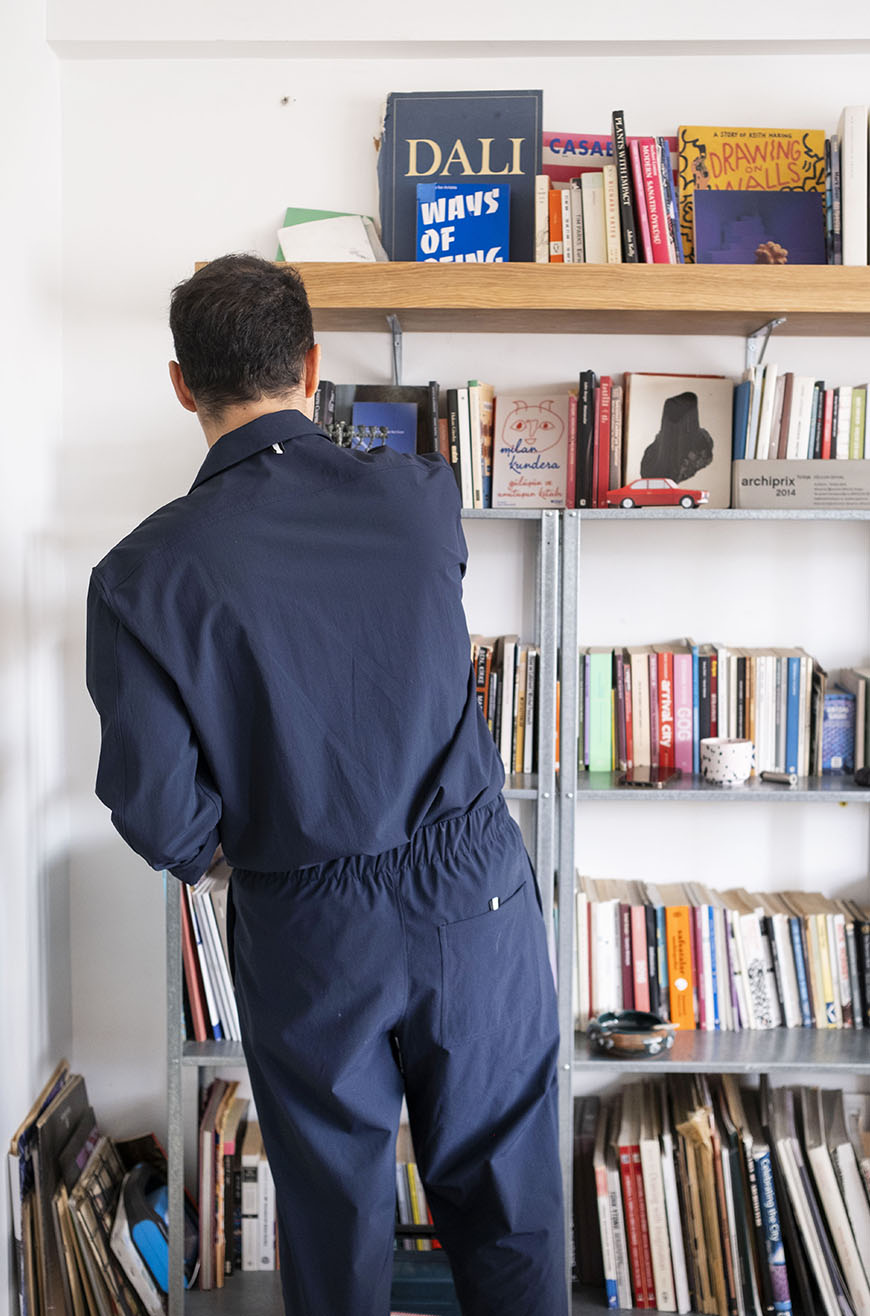
8. We see that many of the furniture pieces in your home are designed and produced by yourselves. How did the idea of making furniture for your home together begin?
Both: It was an incredible day. We started sketching the objects on the coffee table, which looked so lifeless in front of us. Then we decided to drill and cut them, creating layers inside the table. We numbered them, took out the tabletop, and cut it. We added a light inside and placed the objects. With excitement, everything was completed in a single day, and it became a coffee table we loved. Now, we’re designing its companions—nightstands, dressers, sofas, etc. Soon after, we decided to design our tables as well. We designed two: one for production, and the other for dining outdoors in unexpected compositions. We love using them. We’re learning the subtleties of furniture making while creating for ourselves. At this rate, we might end up as furniture makers working only for ourselves.
9. At the end of the shoot, you gave a wonderful presentation. How did this idea and design come about? Do you have plans to turn it into a product?
Both: This idea came to us when we were preparing a table for some dear friends. We decided to create something extraordinary, and our minds collided to form this concept. Ece thinks chaotically, and Oğul is more orderly. When these two work together, chaos and order carry on an endless conflict in the work. An orderly table is set, but life and food are chaotic. A dynamic form of interesting tension emerges. The act of arranging, preparing, and eating becomes a performance. We recreated a similar version of this table at our exhibition at Maçka Art Gallery. Perhaps we’ll turn it into a product too—who knows?
10. Thank you for your time. Lastly, could you share a playlist you’ve been listening to?
Oğul: I’ll share a playlist that was inspired by Ece’s beautifully shaped ear. It’s called The Pleasures of the Ear. We listened to part of it today. I’ve gathered tracks where music circulates through the space, creating a special auditory pleasure. I’m not sure how to describe it exactly.
Ece Duran: @ecoti
Oğul Öztunç: @oguloztunc